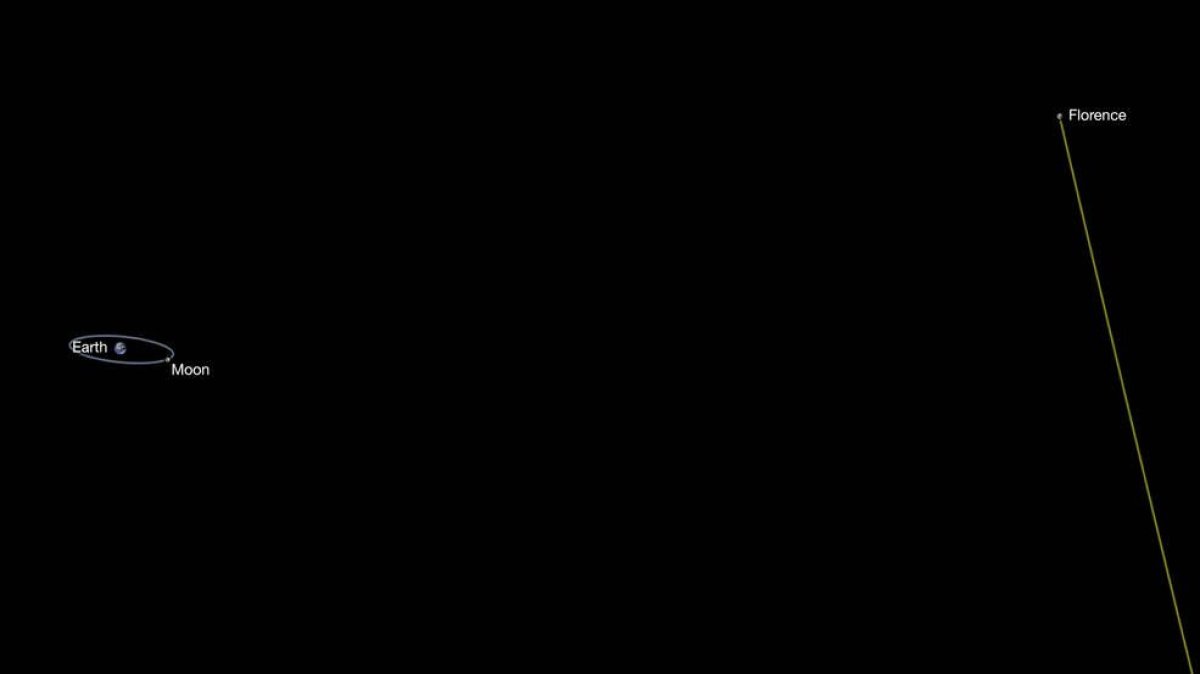
On September 1, an asteroid almost three miles wide will safely fly by Earth. The asteroid is one of the biggest near-Earth objects (NEOs) currently being tracked by NASA, and will be the largest to pass us at a relatively close distance since the space agency began monitoring them 20 years ago.
The asteroid, named Florence (after Florence Nightingale), is 2.7 miles wide and will fly by our planet at a distance of 4.4 million miles. The last time it came closer to Earth was 1890, and the next time it will come anywhere near us will be 2500.
"While many known asteroids have passed by closer to Earth than Florence will ... all of those were estimated to be smaller," Paul Chodas, manager of NASA's Center for Near-Earth Object Studies, said in a statement. "Florence is the largest asteroid to pass by our planet this close since the NASA program to detect and track near-Earth asteroids began."
Florence is so large, it should be visible through small telescopes at the end of August and the start of September. During that time, it will appear to move through the Piscis Austrinus, Capricornus, Aquarius and Delphinus.
It was first detected in 1981 by American astronomer Schelte Bus, who was working at the Siding Spring Observatory in Australia. It is classified as "potentially hazardous" by the Minor Planet Center.

When it makes its close approach in the coming weeks, it will be a strong target for ground-based radar observations, allowing scientists to study the asteroid up close. NASA is currently planning to use the Goldstone Solar System Radar in California and the National Science Foundation's Arecibo Observatory in Puerto Rico to study Florence. The team expects to discover the real size of the asteroid and surface details up to a distance of around 30 feet.
The team also will be able to determine if Florence is part of a binary system, meaning it has a companion asteroid. "If Florence has a satellite, then our chances of detecting it are excellent; and if so, then we plan to measure its motion to estimate the orbital parameters, mass and density of the system," NASA said.
Observations will take place from August 29 through September 8.
While Florence is one of the bigger asteroids being tracked by NASA, it is by no means the largest. The asteroid or comet that hit Earth 66 million years ago, supposedly causing the extinction of the dinosaurs, was around six miles wide.
The biggest-ever asteroids are thought to have hit Earth during the Late Heavy Bombardment period, over 3 billion years ago. During that time, asteroids up to 30 miles wide hit, causing the oceans to boil and the whole planet to shake.
Uncommon Knowledge
Newsweek is committed to challenging conventional wisdom and finding connections in the search for common ground.
Newsweek is committed to challenging conventional wisdom and finding connections in the search for common ground.
About the writer
Hannah Osborne is Nesweek's Science Editor, based in London, UK. Hannah joined Newsweek in 2017 from IBTimes UK. She is ... Read more
To read how Newsweek uses AI as a newsroom tool, Click here.








